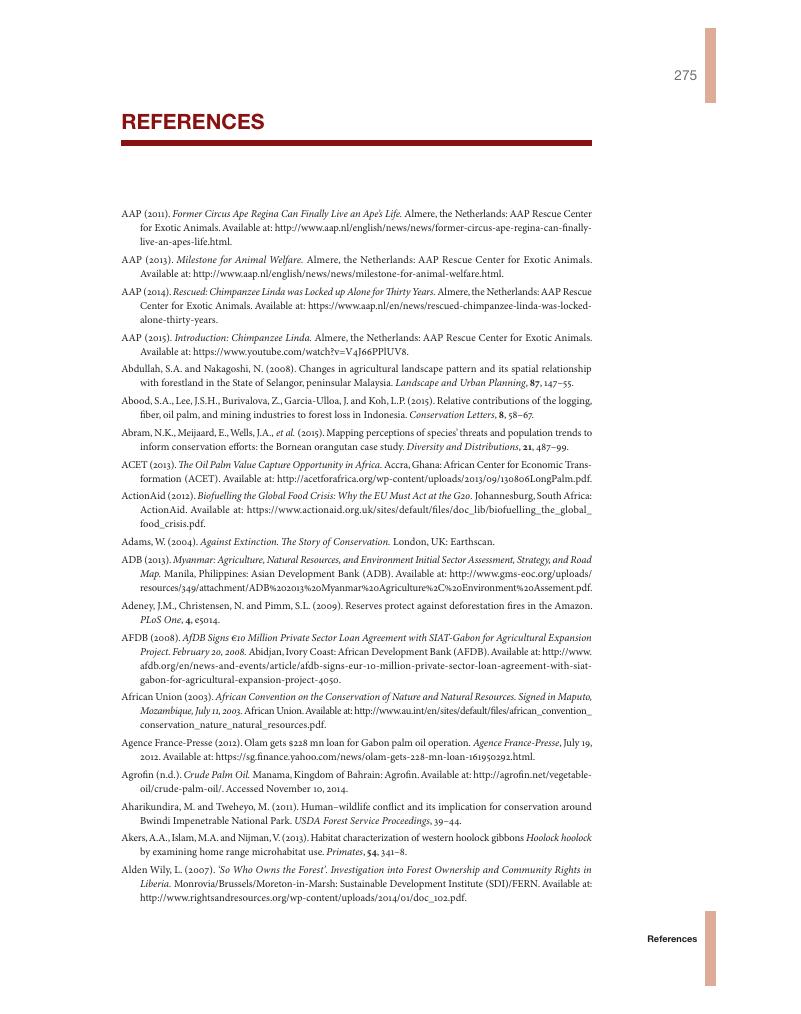Book contents
- Frontmatter
- Credits
- Foreword
- Contents
- The Arcus Foundation
- Notes to Readers
- Acknowledgments
- Apes Overview
- Introduction
- Section 1 Industrial Agriculture and Ape Conservation
- Section 2 The Status and Welfare of Great Apes and Gibbons
- Annexes
- Acronyms and abbreviations
- Glossary
- References
- Index
- References
- Frontmatter
- Credits
- Foreword
- Contents
- The Arcus Foundation
- Notes to Readers
- Acknowledgments
- Apes Overview
- Introduction
- Section 1 Industrial Agriculture and Ape Conservation
- Section 2 The Status and Welfare of Great Apes and Gibbons
- Annexes
- Acronyms and abbreviations
- Glossary
- References
- Index
- References
Summary

- Type
- Chapter
- Information
- Industrial Agriculture and Ape Conservation , pp. 275 - 322Publisher: Cambridge University PressPrint publication year: 2015
- Creative Commons
- This content is Open Access and distributed under the terms of the Creative Commons Attribution licence CC-BY-NC-ND 4.0 https://creativecommons.org/cclicenses/



